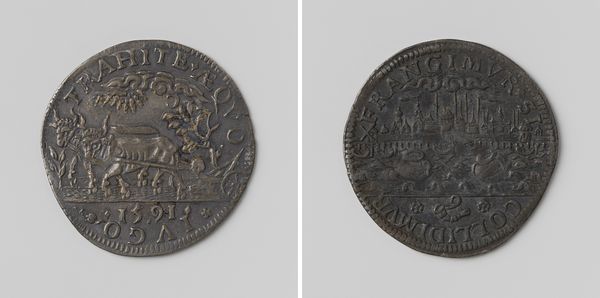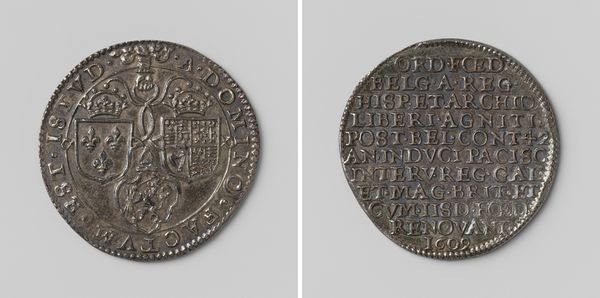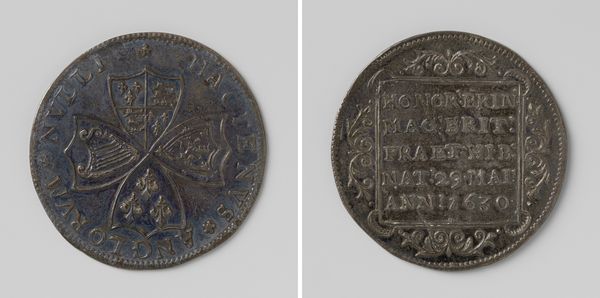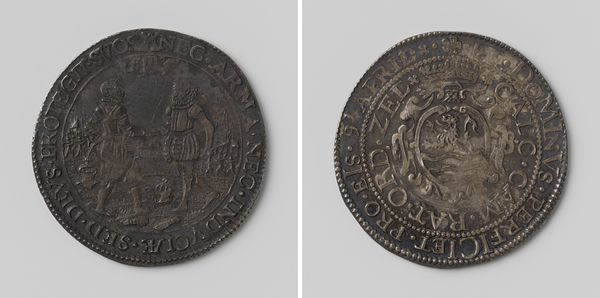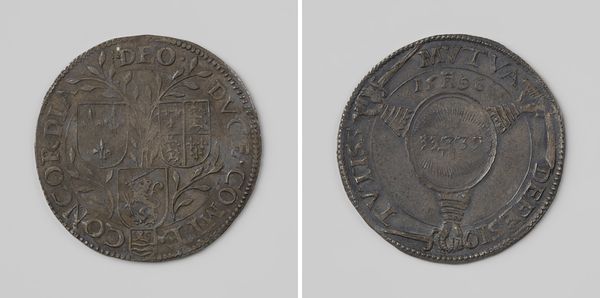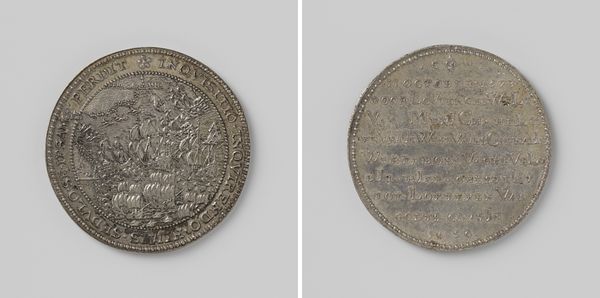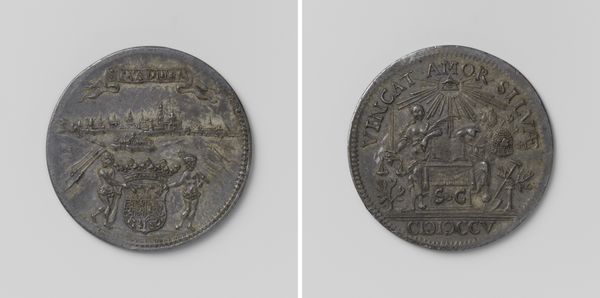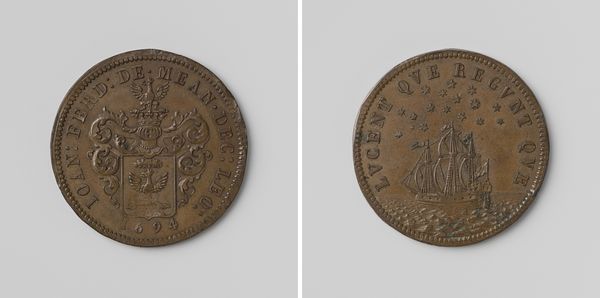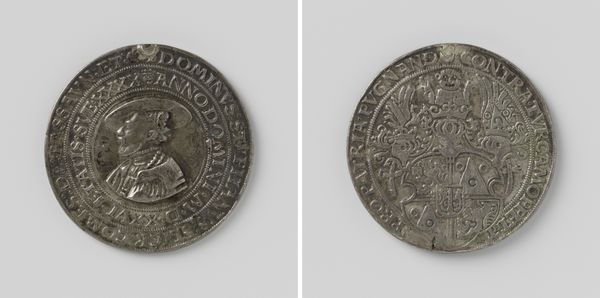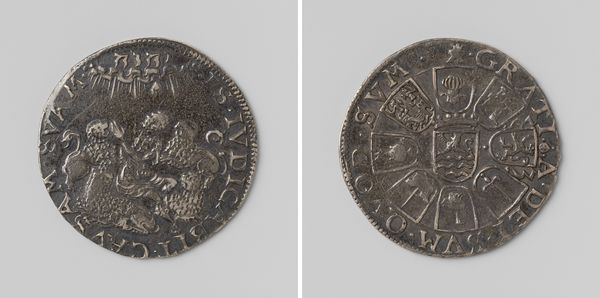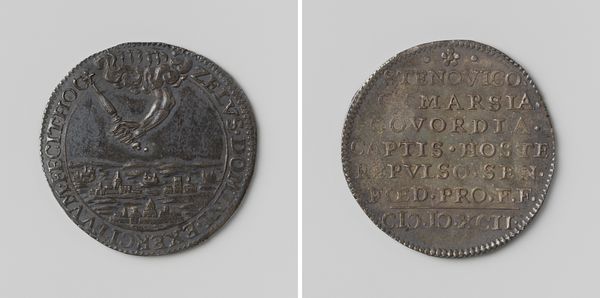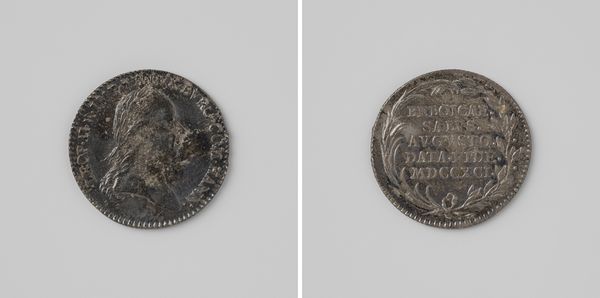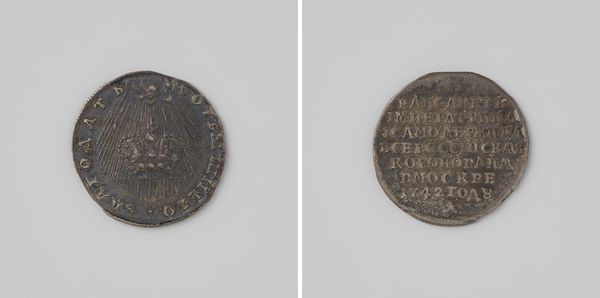
Overwinning in de slag bij Turnhout en het innemen van tien steden en drie versterkingen door Maurits, graaf van Nassau 1597
0:00
0:00
print, metal
#
baroque
# print
#
metal
#
sculpture
#
figuration
#
ancient-mediterranean
#
history-painting
Dimensions: diameter 3 cm, weight 5.71 gr
Copyright: Rijks Museum: Open Domain
This silver medal commemorates the Dutch victory at the Battle of Turnhout in 1597. It's a small object, only 3cm in diameter, but it carries a lot of symbolic weight. Look closely, and you’ll see that the medal has been cast and then carefully engraved. On one side, a lion wielding a sword represents Dutch power, and on the other, a Latin inscription lists the cities captured by Maurits of Nassau. Silver, of course, has long been associated with wealth and status, but in this context, it’s also about the power of a nation. The medal was made to be distributed, a way to celebrate and solidify Dutch identity. Think about the labour involved, not just in the making of the medal itself, but also the mining of the silver. It's a reminder that even seemingly simple objects can be tied to complex social and political histories. Examining the material and process helps us understand the full meaning of this object, blurring the lines between art, craft, and propaganda.
Comments
No comments
Be the first to comment and join the conversation on the ultimate creative platform.
